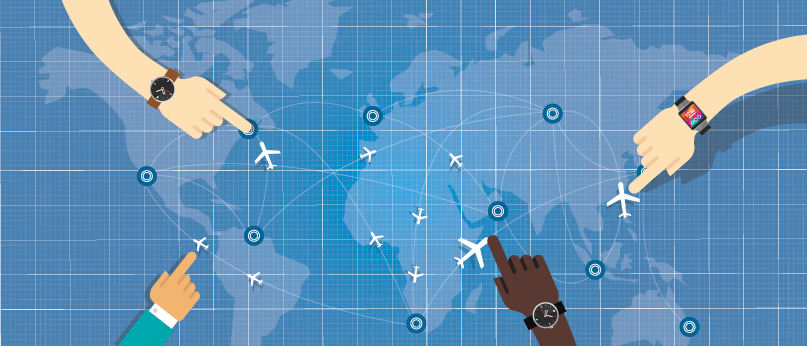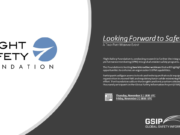
Dear Stakeholders:
Staying ahead of the risks in aviation safety takes quite a lot, whether you’re in a large or small organization. You can’t “set things up on autopilot and then forget about them,” whether you’re the pilot, controller, dispatcher, mechanic, chief pilot or CEO. It takes regular scrutiny of operational hazards to stay abreast of the biggest risks. Even the flights that successfully arrive without a known problem or incident require careful study for many days and months because these days, it’s the precursors that the industry wants to better understand to prevent tomorrow’s accidents.
As you know, Flight Safety Foundation has been working on the Global Safety Information Project (GSIP) for over a year now. We have heard what people have said in our focus groups from June through September this year, and we think we have made sense of the main issues so that we can begin development of the tool kits in our next phase. It’s these tool kits that may be useful as roadmaps for the safety data collection and processing systems that are so crucial to safety management systems.
In our last communication in September, we mentioned a little about what focus group participants were telling us. Now that those group discussions are complete, we have drafted a summary of the notes, discussions and research and believe there are some important themes to be shared with the people helping us to come to grips with the challenges. Here is our short list:
While there is large consensus on using the data from voluntary and mandatory safety reporting programs, there isn’t agreement on what some of the data mean.
A structure for defining taxonomies and capability in the hazard and risk identification process is necessary to better collaborate and share information.
Examples of how the risk assessment process is completed would be useful.
Aviation leaders in government and industry need to promote more data sharing initiatives. Without them, the ability to assess risk is limited.
Safety data protection is built in layers across the industry. How data are protected within an organization is just as important as how they are protected against being used as evidence in legal attempts to turn an error or mistake into a criminal act.
We also have learned a lot about different regions’ capabilities in data sharing – ranging from those that are just getting started to those that have begun to collaborate with others in several different countries. Some detailed information already is available to airlines, air navigation service providers, airports and regulatory authorities through International Civil Aviation Organization regional groups, airline partnerships and industry association groups.
The volume of safety data that can be collected is growing rapidly. Some of it can be valuable, and some may only marginally improve our understanding of risk. Your organizations are often looking for ways to prioritize what is important and make the best quality analysis on what they have without scouring the planet for every last piece of data. The tool kits we plan to create in our next phase need to address how organizations can make the best of today’s data and recognize that data may be enhanced as technology and data collection capabilities change. Some organizations also are still working on getting more volume from their safety reporting. Improving trust in the programs and systems can be just as important.
Monitoring your own voluntary programs can take a lot of effort from your organization. Looking for trends that are actionable is a never-ending search. You want to have your safety reports data-mined for specific terms that indicate certain types of events such as altitude busts or navigation errors, but not every pilot speaks with the same style in describing a safety event. The first trend you see in the data may not be the trend that is closely aligned with an obvious action. The tool kits we build need to note the importance of getting to actionable steps.
We are about to publicly announce the schedule for our 2016 GSIP workshops and wanted you to know about it first. After all, you gave us the insight to make a more informed decision about the real world of aviation safety and the challenges in managing these programs.
Here is where we expect to go this next year to delve more deeply into this subject:
March 2016: Singapore; Santiago, Chile; Sydney
April 2016: Tokyo; Hong Kong; São Paulo
May 2016: Kuala Lumpur, Malaysia; Jakarta, Indonesia;
June 2016: Lima, Peru; Panama City; New Dehli
July 2017: Mexico City
In addition, we still are considering scheduling workshops in the Philippines, China, Costa Rica and the Caribbean, based on available funding.
We would like you to consider sending leaders and program managers from your organization to these workshops to help us all get the greatest benefit from these events.
We think greater collaboration on safety data collection, analysis and protection comes from a healthy collaborative effort by the industry’s key stakeholders.
As we get closer to our workshop dates, you can expect to hear more about the tool kits and the workshop preparations on www.fsfgsip.org. Please tune in as you are able. I want to thank you once again for the feedback you have provided in our focus groups and the insight in taking on the challenge of improving aviation, which remains the safest form of transportation today.
All my best,
Mark Millam
Vice President, Technical
Flight Safety Foundation

